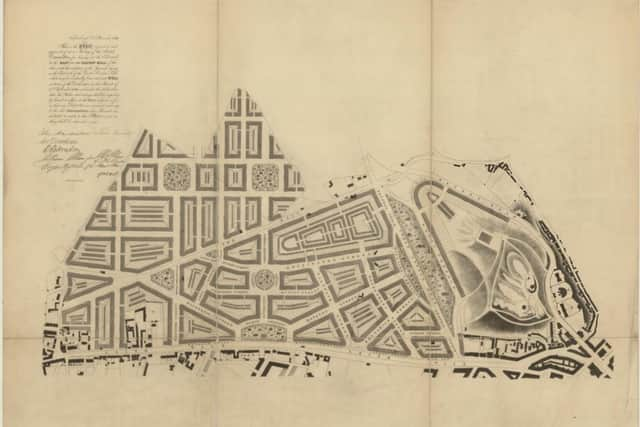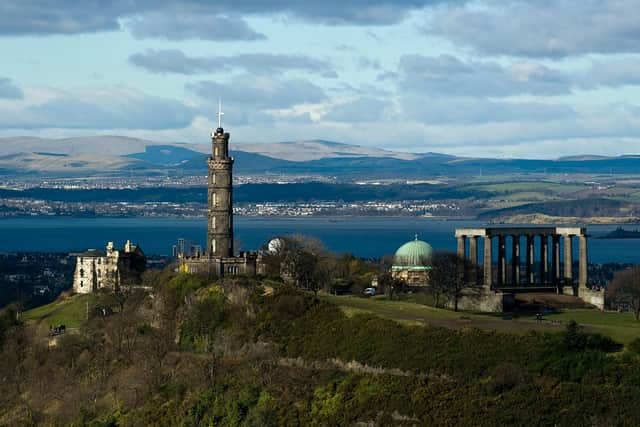The plans for Edinburgh's Third New Town and why it was never built
But while Edinburgh's Georgian New Town is undoubtedly impressive in scale and grandeur, its modern-day footprint could have been significantly larger.
A series of proposals mooted a little over 200 years ago reveal a third New Town, adding to James Craig's original 1767 masterplan and later extensions, was to be constructed east of Leith Walk.
Advertisement
Hide AdAdvertisement
Hide AdFor this vision to be realised, the town council gave the go ahead for the construction of the Regent Bridge, to span the deep ravine separating Princes Street from Calton Hill.
In 1819, the esteemed architect William Henry Playfair submitted a plan showing an extended Georgian metropolis set within an rational and elegant configuration of wide boulevards and grand squares.
But despite receiving the green light, only a small portion of Playfair's ambition, which included scope for grand monuments and public buildings on and around Calton Hill, would ever see the light of day.


Dr Kirsten Carter McKee, author of Calton Hill: And the plans for Edinburgh’s Third New Town, says the plans were a result of the Scottish capital's ambitions to become a major hub of the British Empire.
"This is right after the French Revolution, the Napoleonic Wars have been fought,” she said.
"There is a real consciousness to build strength in empire and bring money in from the colonies.
"What Edinburgh's trying to do is increase its national standing and make itself a port town. If you look at proposals for Leith around 1800, there are proposals to expand the docks and make them absolutely massive. They would've been bigger than Glasgow if the proposal had gone forward.


"The plan was to create this really impressive boulevard at Leith Walk peppered with grand buildings and monuments to come into Edinburgh in order to show the city's importance.
Advertisement
Hide AdAdvertisement
Hide Ad"This is all being proposed at the same time Regent's Street in London is being built. It's the same type of idea of residences, commercial premises and public monuments."
To the observer today, the top end of Leith Walk, where it meets London Road, is indeed comprised of neoclassical edifices to match the best examples of the era they were constructed.
But aside from Regent Terrace, Carlton Terrace and Royal Terrace on Calton Hill, and the uniform townhouses of Hillside Crescent and adjoining streets, that is where the development ends.


Head northwards, towards what would have been the centre of Playfair's vision, and you are catapulted instead into the late 19th century, submerged in a sea of traditional stone tenements.
Dr Carter McKee said there were various reasons behind the plans being only partially realised, but pointed to the changing needs of the city of Edinburgh as being a prime factor.
She said: "Looking at when the projects abruptly stops, it's roughly around the time the railways come in.
"Suddenly there's a different need for the type of housing that is to be built and a new conversation on how Edinburgh should develop.
"It's no longer about focusing on Edinburgh as a port. Instead, it's about the connectivity of the railways.
Advertisement
Hide AdAdvertisement
Hide Ad"Purely because it took so long to develop the plan, the world changed and it was never finished."
A message from the Editor:
Thank you for reading this article. We're more reliant on your support than ever as the shift in consumer habits brought about by coronavirus impacts our advertisers.
If you haven't already, please consider supporting our trusted, fact-checked journalism by taking out a digital subscription at https://www.scotsman.com/subscriptions.
Comments
Want to join the conversation? Please or to comment on this article.
